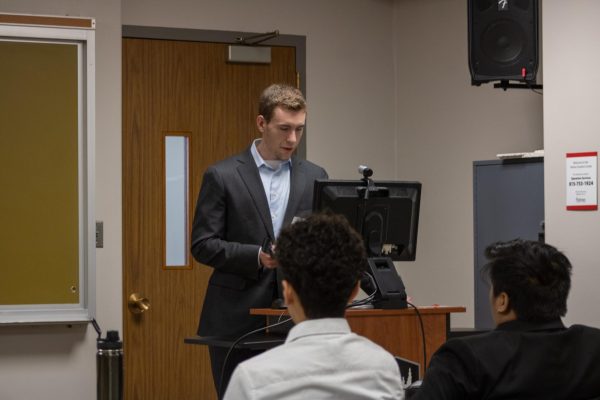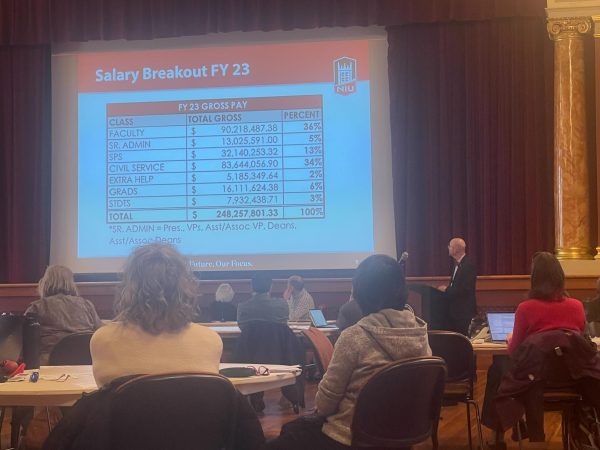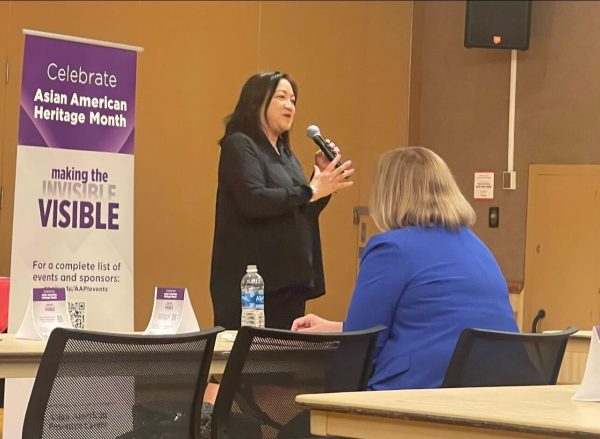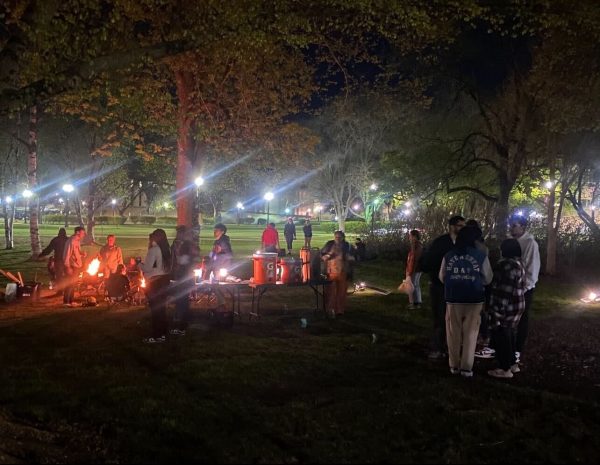Digging deep to discover ancient history
April 29, 2003
An icon drawn on a gourd bowl may seem unimportant, but this stick figure dates back more than 4,000 years to the oldest known religion.
Winifred Creamer, an anthropology professor, with a team of archaeologists, discovered the gourd bowl last summer in an unmarked burial ground near Peru.
“It was like a snowball effect,” Creamer said. “At first, we just thought it was an interesting piece, but didn’t think much about it. It soon creeps up on you, gradually making you think how important it could be. We didn’t know until a few months after returning home from Peru and got the results from the carbon dating tests that we found out the bowl was so old.”
Creamer said a University of Illinois at Chicago graduate student was the one to pick up the piece. The team looked at drawings of other gods from this time period, trying to piece the exact date.
Also, the design of the bowl, with the geometric design and the band around the top, clued Creamer and her team in that the bowl was older.
“This image is pervasive throughout the region’s Andean cultures,” Creamer said. “What the find demonstrates is that Andean religion shared basic principles for a much longer time than we had known.”
Previously, the earliest depiction of the deity dated to 1000 B.C.
Carbon dating of the gourd determined the fragment was more than 4,000 years old, which dates it back to 2250 B.C.
“Here’s an ancient god used consistently for 1,000 years,” Creamer said. “The oldest known Christian symbols are 2,000 years old and Jewish symbols are a little older. By finding this bowl, it shows that religions of today may continue with important symbols for a longer period of time.”
Creamer will return to Peru on May 29 for a two-and-a-half month stay and will look in the adjacent valley of the Peruvian coast.
“We are certainly keeping our eyes open for unusual pieces,” Creamer said. “We look at looted burial grounds where one corner of it could be the oldest burial site, but because they are mixed up so badly, it is hard to tell.”
The funding comes from a grant from the National Science Foundation.
Anthropology student Claudia Seijas will join Creamer and her team this summer, focusing her attention on the badly looted burial grounds.
“Seijas is allowed to participate through the Research Experience for Undergraduates,” Creamer said. “Our department really has great opportunities for students.”












